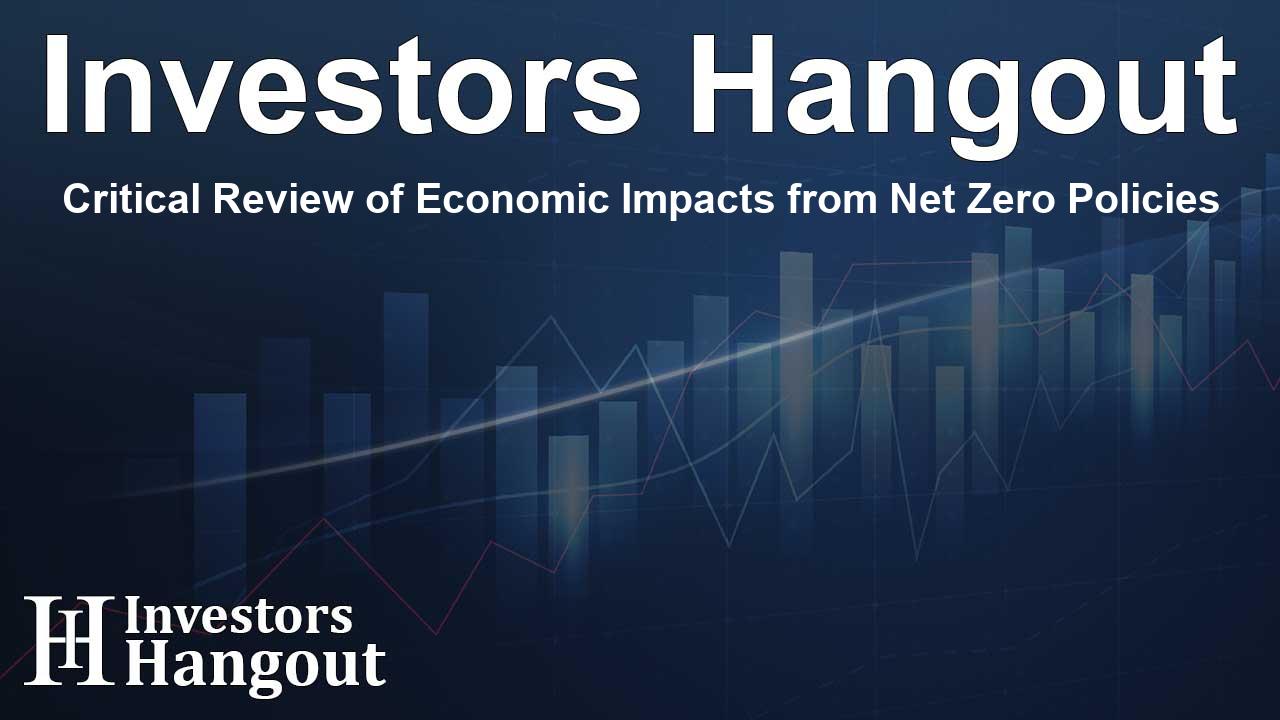Critical Review of Economic Impacts from Net Zero Policies

Unveiling the Financial Implications of Net Zero Energy Policies
The economic consequences tied to the goal of eliminating fossil fuels within the next two decades are dramatically detailed in a recent documentary titled "What Does It Cost?" This film, produced by Discovery Institute and filmmaker Ken Peterson, delivers startling insights into the potential financial burdens placed on residents by these aggressive energy policies.
Diving Deeper into the Documentary's Findings
This documentary reveals the findings concerning the legislative actions undertaken in recent years across various states aiming towards sustainable energy goals. The proposed timeline targets achieving 100% of electricity from zero-emission sources by 2040 in Oregon and 2045 in Washington. However, it raises essential questions about the feasibility and financial viability of such ambitious aims.
Exploring the Bucks: Expected Costs
According to the documentary, the staggering price tag attached to these goals could reach approximately $549.9 billion by 2050, accumulating towards a grand total of $1 trillion. This figure signals a considerable financial strain on citizens, a point emphasized by Ken Peterson, the director of the film. He expresses disbelief at how little the lawmakers considered these costs when drafting their legislation.
Understanding the Consequences for Citizens
During the documentary, Peterson states, "The costs of trying to obey the laws will be crushing for our citizens." This statement highlights a crucial perspective: the focus on ambitious environmental goals may overshadow the economic reality inflicted upon everyday people. The documentary draws upon data from a thorough report by Jonathan Lesser and Mitch Rolling, which suggests disturbing trends in electricity affordability and availability as the states push forward with their net zero ambitions.
The Unexpected Consequences of Insufficient Planning
The report referenced in the documentary imparts a cautionary message: despite intentions to mitigate climate change, the actual implications of these policies might yield minimal impact on the global temperature, decreasing only by an inconsequential 0.003 °C. Conversely, residents might face an intensive hike in electricity rates, potentially soaring by 450%.
Strain on Energy Infrastructure
The documentary also touches upon concerns regarding the electrical grid's capacity to meet the escalating demand from these policies. The call for vast amounts of renewable energy raises red flags about reliability and sustainability as intermittent sources like wind and solar are proving incompatible with the existing infrastructure.
Alternative Energy Solutions
Healthcare industry professionals like Mitch Rolling articulate a critical viewpoint in the documentary, contesting the current narrative that positions wind and solar energy as the most cost-efficient alternatives. He posits that the reality reveals a different story, where reliance on these resources proves to be both expensive and unreliable. However, he advocates for nuclear energy as a clean, dependable solution to meet energy demands without compromising environmental standards.
Understanding Discovery Institute's Mission
This film is not just a critical review of net zero energy policies but also highlights the vital role of organizations like Discovery Institute, a non-profit dedicated to fostering innovation across various sectors. Their mission encompasses enhancing our understanding of economics, education, technology, and ultimately paving the way for more sustainable energy practices.
Frequently Asked Questions
What is the central theme of the documentary "What Does It Cost?"?
The documentary evaluates the financial implications of net zero energy policies and illustrates the potential burdens on residents due to these ambitious legislative goals.
How much could the financial burden grow by 2050 according to the documentary?
The documentary suggests that costs might escalate to around $549.9 billion by the year 2050.
What alternative energy sources are discussed in the documentary?
The documentary advocates for nuclear energy as a reliable and environmentally friendly option in contrast to wind and solar energy.
Who directed the documentary "What Does It Cost?"?
The film was directed by Ken Peterson, associated with Discovery Institute and Hat Rock Capital LLC.
What challenges do renewable energy policies face, as highlighted in the documentary?
The documentary emphasizes challenges like dramatically increasing electricity rates and the impending demand that current renewable energy sources may fail to meet.
About The Author
Contact Thomas Cooper privately here. Or send an email with ATTN: Thomas Cooper as the subject to contact@investorshangout.com.
About Investors Hangout
Investors Hangout is a leading online stock forum for financial discussion and learning, offering a wide range of free tools and resources. It draws in traders of all levels, who exchange market knowledge, investigate trading tactics, and keep an eye on industry developments in real time. Featuring financial articles, stock message boards, quotes, charts, company profiles, and live news updates. Through cooperative learning and a wealth of informational resources, it helps users from novices creating their first portfolios to experts honing their techniques. Join Investors Hangout today: https://investorshangout.com/
The content of this article is based on factual, publicly available information and does not represent legal, financial, or investment advice. Investors Hangout does not offer financial advice, and the author is not a licensed financial advisor. Consult a qualified advisor before making any financial or investment decisions based on this article. This article should not be considered advice to purchase, sell, or hold any securities or other investments. If any of the material provided here is inaccurate, please contact us for corrections.
